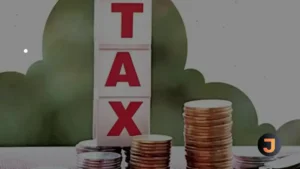Growth and Challenges in India’s Taxation System
In a recent revelation by the Ministry of Finance, India’s tax collection dynamics have exhibited interesting trends. The report highlighted a robust 17.7% growth in net direct tax collections for the fiscal year 2023-24, amounting to Rs.19.58 lakh crores. A notable shift was seen in the composition of tax revenue, with personal income tax, including securities transaction tax (STT), escalating to 53.3% of the total direct taxes, up from 50.06% in the preceding year.
While direct taxes, such as income and property tax, showed a positive trajectory, corporate tax collections experienced a downturn. The contribution of corporate taxes to the overall tax pot reduced to 46.5%, a decline from the previous year’s 49.6%. This decrease has been attributed to significant corporate tax cuts implemented by the government in 2019.
Concurrently, there has been a shift in the balance between direct and indirect taxes. Indirect taxes, which include Goods and Services Tax (GST) and union excise duties, have seen an increase in their share after a period of decline since the 1980s. This rise in indirect taxes suggests a heavier financial load on lower-income earners due to the regressive nature of such taxes.
The report also provided insights into the distribution of personal income tax payers. A majority of filers fall within the Rs 1 lakh to Rs 5 lakh annual income bracket, yet they contribute only 17.73% to the total income tax collected. In stark contrast, the affluent segment earning above Rs 50 lakh, though small in number, accounts for a substantial 42.3% of the income tax revenue.
India’s effective personal income tax rate stands out when compared with BRICS nations, being one of the highest. This high rate raises concerns regarding economic efficiency and potential increases in tax evasion and avoidance practices.
To address these challenges and enhance direct-tax collection, the government has taken several steps. The Vivad se Vishwas scheme aims to resolve pending tax disputes, while digital transactions are being promoted to improve transparency and reduce cash-based evasion. The Finance Act, 2020 introduced options for concessional rates for those foregoing certain exemptions and incentives. Moreover, tax authorities are ramping up compliance measures, leveraging data analytics to pinpoint non-compliance.
Education campaigns are underway to foster a culture of compliance among taxpayers. The scope of TDS (Tax Deduction at Source) and TCS (Tax Collection at Source) has been broadened to include various transactions, thereby expanding the tax base.
The government’s Transparent Taxation – Honoring The Honest platform is another initiative aimed at simplifying the tax system and encouraging honest declarations. These measures are part of a broader effort to refine India’s taxation system, ensuring it is equitable and capable of supporting the nation’s socio-economic objectives.






